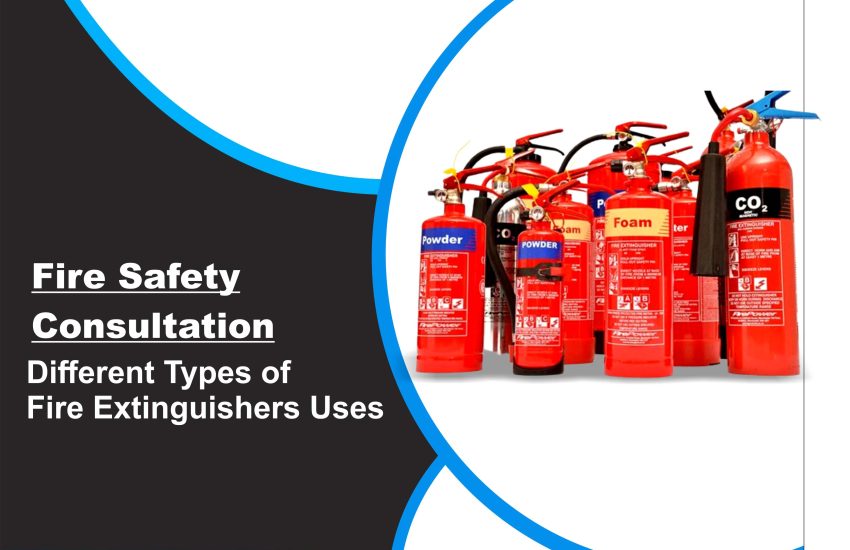Different Types of Fire Extinguishers Uses When you think of a fire extinguisher, the classic red canister might come to mind. However, not all fire extinguishers are the same. In fact, each type is designed to tackle a specific class of fire using different suppression methods. Therefore, understanding these types is critical for fire safety, whether you’re at home, in the office, or in an industrial setting.
Let’s explore the main types of fire extinguishers and how each one is used effectively.
1. Water and Foam Fire Extinguishers
Water and foam extinguishers work by eliminating two key elements of a fire: heat and oxygen.
- Water fire extinguishers remove heat and are best for Class A fires involving paper, wood, cloth, rubber, and plastics.
- In contrast, foam extinguishers also form a barrier between the fire and oxygen, making them suitable for Class B fires such as those caused by gasoline, oil, or solvents.
These extinguishers are ideal for schools, offices, and residential buildings.
2. Carbon Dioxide (CO₂) Fire Extinguishers
CO₂ extinguishers displace oxygen and cool the burning material with a cold discharge. As a result, they effectively handle:
- Class B fires from flammable liquids
- Class C fires caused by electrical equipment, such as computers, motors, and outlets
Moreover, CO₂ extinguishers leave no residue, making them excellent for offices, data centers, and labs with sensitive electronics.
3. Dry Chemical Fire Extinguishers
Dry chemical extinguishers interrupt the chemical reaction of a fire. They’re among the most versatile extinguishers available.
- You can use them on Class A, B, and C fires
- They’re suitable for homes, garages, warehouses, and industrial sites
There are two main types:
- ABC dry chemical for general fire protection
- BC dry chemical for flammable liquids and electrical fires
Because of their wide range of use, these extinguishers are common in fire safety kits.
4. Wet Chemical Fire Extinguishers
Wet chemical extinguishers don’t just cool the fire—they also create a soapy barrier that prevents re-ignition.
- These are specifically designed for Class K fires that originate from cooking oils, animal fats, and grease
- They are primarily found in commercial kitchens, food trucks, and restaurants
Additionally, their unique formulation makes them ideal for high-temperature grease fires that water extinguishers can’t handle.
5. Dry Powder Fire Extinguishers
Dry powder extinguishers target Class D fires, which involve combustible metals like aluminum, magnesium, and sodium.
- These extinguishers absorb heat and separate oxygen from the fuel source
- They are most often used in chemical plants, factories, and metal workshops
Unlike others, dry powder units must match the specific type of metal involved in the fire.
6. Clean Agent Fire Extinguishers (Halogenated)
Clean agent extinguishers use halocarbon gases to suppress fires by breaking the chemical reaction without leaving residue.
- Suitable for Class B and C fires
- Larger clean agent units can also extinguish Class A fires
- Commonly used in server rooms, hospitals, and libraries
Furthermore, these extinguishers are environmentally safer alternatives to older Halon-based systems.
7. Water Mist Fire Extinguishers
Water mist extinguishers use ultra-fine water particles to cool flames and block oxygen.
- They are safe for both Class A and Class C fires
- Ideal for areas with sensitive electronics where traditional water extinguishers may cause damage
Because they don’t leave a mess, they’re often preferred in healthcare facilities, museums, and archives.
Final Thoughts
Different Types of Fire Extinguishers Uses Choosing the right fire extinguisher depends on the type of fire risk, your workplace environment, and safety regulations. By understanding each extinguisher’s capabilities, you can respond quickly and effectively in an emergency.


